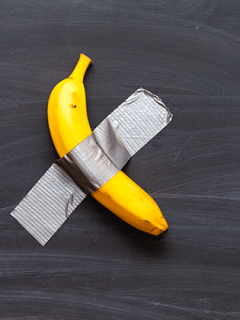With a circulation of 14.7 million daily newspapers and 3.6 weekly and Sunday newspapers, Germany is the largest newspaper market in Europe and even the fifth largest in the world. Today we take the occasion of Press Freedom Day to “shed a little light” on the industry…
Packaging of print products
How does the newspaper get from the printer to the reader? Daily newspapers are usually delivered directly from the publisher to the delivery person. Early in the morning, the delivery person drops the freshly printed newspaper into the subscriber’s letterbox. Around 160,000 delivery staff supply newspaper readers with the latest edition night after night. For this reason, no repackaging is necessary. The newspapers are bundled with the help of a Strapping tool bundled.
Consumer catalogues and magazines are often foiled with a bonnet shrink machine . This type of film packaging enhances the product with its glossy surface and protects it at the same time. However, more and more consumers are critical of this type of packaging for environmental reasons.
Cartons and mailing bags for printed matter
Printed products usually find their way into the shop in a carton. Very practical: with the carton finder you can quickly find the right product! Sturdy mailing tubes are used for all print products that should not be bent – such as posters or calendars. So there is exactly the right packaging for every print product.
How does the message get into the newspaper?
But how does the news get into the newspaper, onto the screen or onto the net? The journalist researches the topic, conducts an interview, talks to an eyewitness… In short, he obtains the relevant information, writes or sets the article to music and has it checked by another editor. When the proofreading loop is complete, the text can possibly be placed in the newspaper with pictures and goes to print or on air.
Since only a few media can afford a worldwide network of correspondents, there are news and press agencies. They deliver news on current events: The information is processed and offered as ready-made reports in the form of text, pictures, sound or film material for mass media. The dpa, Deutsche Presseagentur, is the best-known provider of such content in Germany.
However, journalists are also exposed to professional risks. They can be held liable for errors in reporting, for example, copyright infringements, mix-ups of image or text material or violations of personal rights. In principle, all persons who contributed to the creation and publication are jointly responsible for the content.
Who is responsible for the content?
But what about freedom of the press?
In this year’s ranking of press freedom, Germany is in 13th place and thus in the upper midfield of the EU states. Europe remains the region where media professionals can work most freely and safely. Overall, the working environment for journalists in Germany is good and it is one of the few countries where the right to freedom of opinion and freedom of the press is enshrined in the Basic Law and is lived on a daily basis. Nevertheless, the increasing number of violent attacks on journalists is a cause for concern: at least 22 attacks were counted by Reporters Without Borders last year. In addition to physical aggression, journalists increasingly report verbal hostility such as “lying press” and attempts to prevent reporting.Government agencies also sometimes play their part. For example, draft laws to expand the surveillance powers of secret services should be viewed critically and could make the work of journalists more difficult.
Trends in the publishing industry
The good news for readers first of all: the German market for print products is proving to be extremely vital and innovative. Especially in the magazine segment there is a growing diversity. Every year, more new titles come onto the market than are discontinued. With a turnover of about four billion euros and 1.6 billion newsstand sales, Germany is the world’s number one, according to the Association of German Magazine Publishers (VDZ). And the trend is continuing: Almost every second publisher plans to launch new, regularly published magazines in 2019.However, there is also a downside. Newspapers in particular are struggling with this. Their circulations have been declining for years. If you look at the data of the Federal Association of German Newspaper Publishers (BVDZ) on the newspaper market in Germany, this quickly becomes clear – both the number of newspapers and the circulation are falling inexorably. While 351 daily newspapers with a circulation of 16.82 million were published in 2015, in 2016 there were 344 daily newspapers with a circulation of 16.08 million. And the 2018 survey counts only 327 dailies with a total of 14.7 million copies. However, this still means that there are 198 newspaper copies per 1,000 inhabitants over the age of 14.
In general, the declining newspaper market goes hand in hand with decreasing press diversity: circulation figures and sales are falling. Savings and job cuts then lead to less and less content being produced by the newspapers themselves, but rather to resorting to identical content from central editorial offices and news agencies.
















